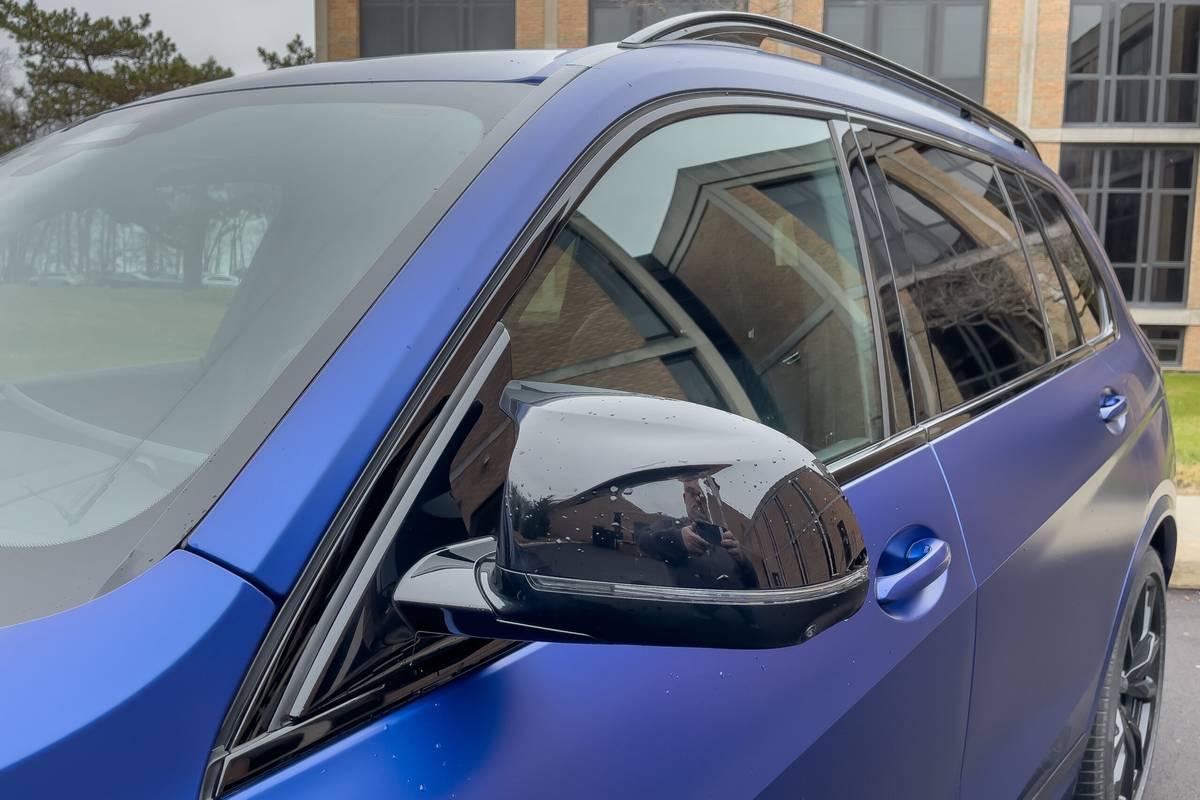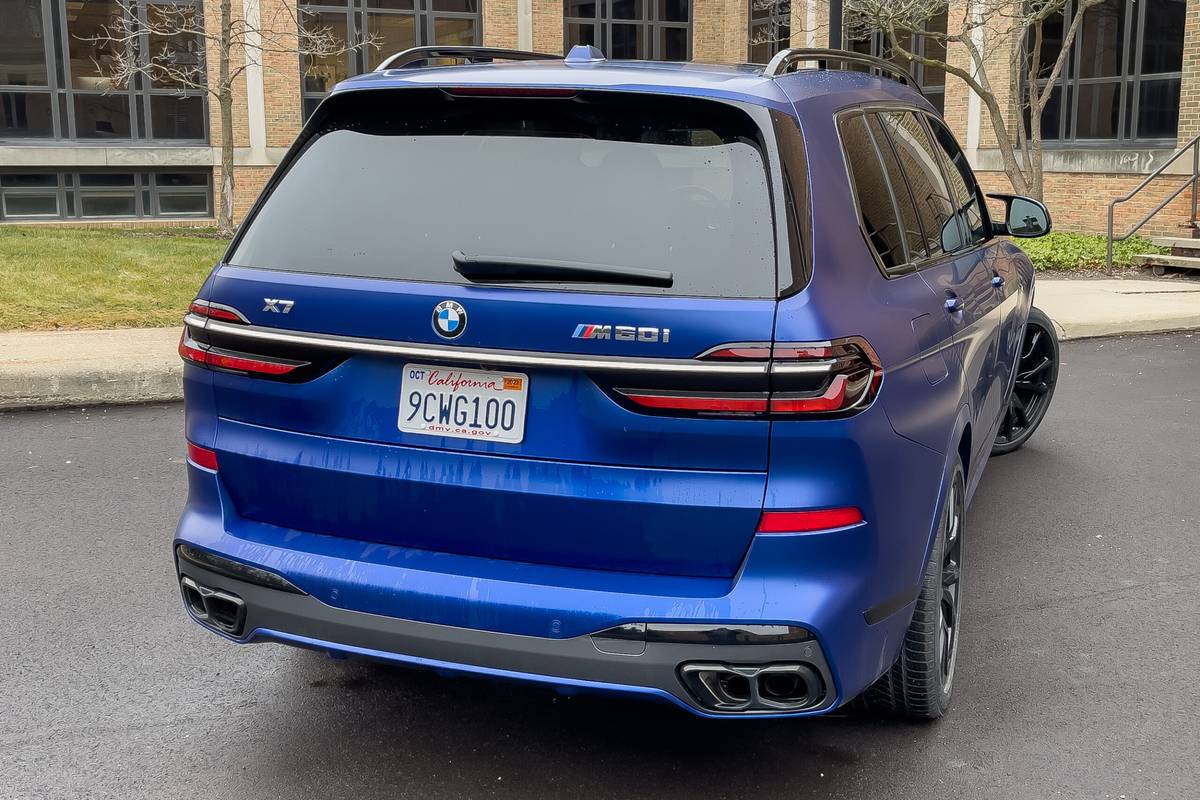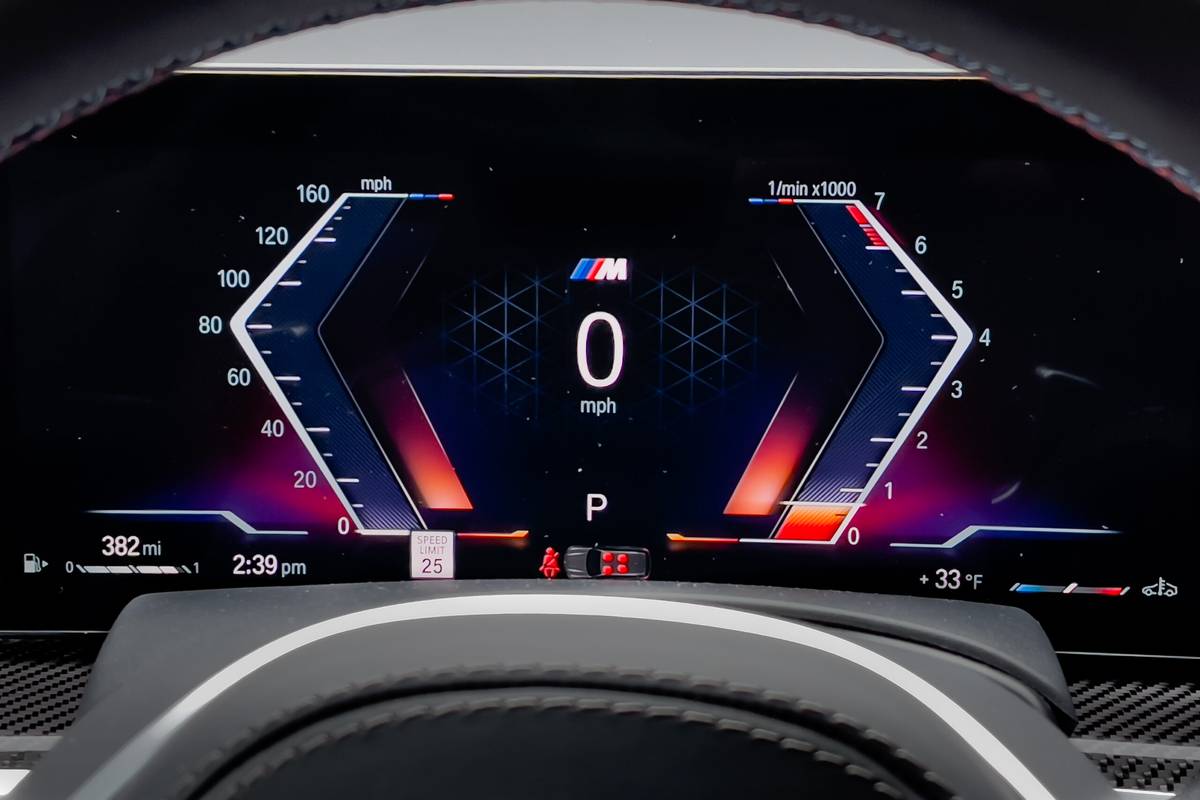2023 BMW X7 Review: Fantastic, But Rapidly Approaching Overly Frustrating


The verdict: Cushy, comfy, and quick, the newly restyled BMW X7 provides a mostly premium experience, but it still can confound casual users.
Versus the competition: The new X7 provides a true rival to luxury SUVs such as the Mercedes-Benz GLS and Land Rover Range Rover, but it’s starting to approach too much technology overcomplication.
When you get to a certain price point for luxury SUVs, you start to diversify into two categories: the American behemoths like the Cadillac Escalade, Lincoln Navigator and Jeep Grand Wagoneer, or the slightly more global-sized foreign brand offerings like the Mercedes-Benz GLS, Land Rover Range Rover, Lexus LX 600 and this, the redesigned 2023 BMW X7. They’re priced the same, most of them reaching over $100,000 easily, but their missions are different: The global brand offerings need to be able to fit through tight European cities, while the Americans ones more often ply wide-open interstates from sea-to-shining-sea.
Related: What’s New With SUVs for 2023?
BMW’s new X7 is decidedly a global player, obvious from its size and content, and features three different trims to satisfy the super-premium SUV buyer. It starts with the X7 xDrive40i, powered by a twin-turbo 3.0-liter inline-six-cylinder engine pumping out 375 horsepower; steps up to the performance M-badged X7 M60i with its 523-hp, twin-turbo V-8; and culminates in the exclusive Alpina-badged XB7 and it’s hairy-chested 631-hp, V-8 and super-opulent interior. We spent a week with the “mid-level” model, the M60i, but “mid-level” is something of a misnomer — there’s nothing cheap or ordinary about this SUV. BMW doesn’t make an “X7 M” like it does for the X3 or X5, rightly thinking that a track-capable M version of a seven-occupant SUV is a bit barmy. Instead, it hands its X7 over to in-house tuner Alpina to create the top-of-the-line Alpina XB7, which is tuned more for on-road high performance than track capability.
It may not be the top Alpina, but the mid-level M60i is certainly nothing to sneeze at. We wanted to evaluate how the updates BMW made to the X7 for 2023 affected its livability on a daily basis. With the latest German luxury trend towards increasingly complicated touchscreen controls, we had our concerns, especially after experiencing the latest Mercedes-Benz systems that have left a generally terrible impression on us. Did BMW fall into the same trap? We drove one for a week to find out.
Is the Style Still Polarizing?
















The new X7 shows its family resemblance to the newly redesigned 7 Series sedan by mimicking its headlight and grille treatment — there are some slim daytime running light “brows” located above the actual headlights, which are lower on the front fascia. They flank a big, BMW-style grille that somehow looks less offensive and more appropriate on a big SUV like this than it does on … well, the rest of the BMW lineup. It’s been toned down a bit recently, too, and finally looks a bit more tasteful and better integrated into the rest of the styling. Yes, it’s still a standout design, but the overall X7 look is more mature while still being avant-garde and modern. I’d call it a successful update to the big SUV’s look.
And it is a big SUV — maybe not as enormous as the aforementioned American behemoths like the Escalade or Grand Wagoneer, but still on the large side for full-size SUVs. That enables it to feature a third row that’s actually usable, albeit more usable for children or smaller people than for full-size adults. Getting in is easy, too, thanks to power-articulated second-row seats that fold out of the way. Still, most folks will spend their time in the first and second rows, which are plenty comfortable and spacious, and feature tons of headroom thanks to the tall, upright profile of the X7.
Not Lacking for Grunt
Powering this version of the X7 is BMW’s venerable twin-turbocharged 4.4-liter V-8 engine, a rarity in an age of increasing hybrid tech and electric powertrains. It is as glorious here as it is anywhere, with incredible noises combined with unbelievable thrust that makes you care more about smiles per gallon than fuel economy. It pumps out 523 hp and 553 pounds-feet of torque, and routes it through an eight-speed automatic transmission to all four wheels through full-time all-wheel drive. BMW says that this is good for a 0-60 mph sprint of 4.5 seconds, and I believe it — the acceleration this massive SUV presents is fierce, and gets even more immediate when you play with the various drive modes. The M60i designation is the mid-level X7, the performance model that slots in above the X7 xDrive40i but below the fire-breathing Alpina XB7 model and its 631-hp version of the 4.4-liter turbo V-8.
But more power and more sport-tuned suspension is not what the X7 needs. It’s a big SUV; nobody’s ever going to drive one on a track, so focusing on how it drives in everyday situations, on highways and byways, through traffic and urban stop-and-go — these are more important. The X7 does beautifully in all of these conditions, soaking up bumps (despite its massive wheels shod with low-profile tires) with ease, creating a smooth yet well-controlled ride. It’s not floaty, it’s not tippy, it’s just calm and sophisticated, imparting an ease of driving to its handler that’s exactly what I want in a big family SUV, luxury-branded or otherwise.
It’s also quiet inside, with plenty of sound insulation keeping the cabin to luxuriously hushed levels of road, wind and engine noise. The driving experience of the latest revised X7 is as it should be: it feels expensive, well made, beautifully tuned and, frankly, like something special — which is exactly how a vehicle this expensive should feel.
Tech a Tick Too Far












































But while the interior is beautifully made and features a good amount of high-quality leather and metal to successfully convey just how upscale the X7 is, the tech has gone a tick too far. This is an increasingly common issue among the expensive German luxury brands, we’re finding (more so with Mercedes than BMW), but the Bavarian company is just as guilty of the same thinking. This is the idea of replacing luxury appointments with crazy technology and thinking it’s somehow a suitable replacement. When the interior goes all flat-panel touchscreen, it doesn’t convey luxury in any tactile way — it’s just a flat piece of plastic you’re touching, not an articulated button or knob. So, BMW has tried to up the technology behind that screen with all manner of functions seemingly as a replacement for lost perceived quality.
Facing the front-seat occupants is a large, slightly curved multimedia display consisting of a digital gauge cluster and an adjacent touchscreen display, both integrated to appear as one continuous display. It’s bright, it’s clear, and in terms of the multimedia display, it uses a “card” style format that allows you to swipe left or right to find a desired system. But it also features several menus and screens that are so jammed full of extraneous controls, systems, adjustments, icons and features that a huge portion of it is simply unused. BMW could cut half the “features” the X7 has in its multimedia screen and be better for it.
The problem with this system is that the resulting multimedia systems are jam-packed with icons for features nobody needs that you have to sort through to find the one thing you want, such as looking for various settings for the audio system buried in a grid matrix of dozens of icons. More frustratingly, you’re left with a climate control system that has a dozen different sliders and controls, none of which appear to be “off,” when you simply want to turn off the system. It features a bunch of different settings that aren’t clear or easily understandable, it’s impossible to adjust while driving without being massively distracted, and it leads to a significant amount of frustration. The tech-gone-wild affliction is becoming a serious impediment to recommending German luxury brands these days, as the level of complication and distraction required to use even basic functions like climate controls has simply gone too far. This becomes especially glaring when one plunks down into the driver’s seat of the latest Genesis luxury models and is faced with an array of actual buttons, controls and easy-to-use multimedia systems that are becoming the benchmark for luxury vehicles.
I’d Rather Have the X7 over a Benz

What we’re left with at the end of the day is a stylish, distinctive, very well-appointed and supremely comfortable luxury SUV saddled with touchscreen controls and tech that will frustrate even tech-savvy users. That said, if you insist on a German-brand full-size luxury SUV, the controls and tech in the latest X7 are generally about as easy to use and slightly less distracting than those found in the latest Mercedes-Benz GLS (at least until the GLS goes to the next-generation multimedia system found in the more recently refreshed Mercs, which will then give the nod to the BMW). The kicker between the latest BMWs and Mercedes models is steering wheel — Mercedes-Benz is doubling down on “touch-sensitive” controls on the steering wheel spokes, meaning there are sections of the wheel you simply cannot touch even casually or you’ll change a setting or adjust a volume. This is not the direction BMW is going in; while its steering wheels are simple multifunction affairs, they still require a button push to activate anything. It’s a much better way.
As for pricing, the X7 is matched up well with competitors. The base price for my very well-equipped 2023 X7 xDrive M60i came to $104,995, including a surprisingly reasonable $995 destination fee (included in all pricing figures here). As with most German luxury cars, however, options inflated the price considerably, with items like blue metallic paint, a full Merino leather interior, a premium audio system and more that drove the as-tested price up to $122,545. Yes, this is a princely sum for any automobile, but it’s not out of line for what other automakers are charging for their premium luxury people haulers. Of the lot, the new X7 has the looks and the goods to justify its price. Grab one before BMW decides to make the interior technology even more frustrating.
More From Cars.com:
- 2023 BMW X1 Review: Tech-Focused Without the Fuss
- 2023 BMW X1: BMW’s Littlest SUV Grows Up With New Tech, More Power
- Hands to Yourself: 2023 BMW X3 Removes Gesture Control
- 2024 BMW X5, X6 M Competitions: Hybrid V-8 Promises Efficiency Boost
- Research SUVs
Related Video:
Cars.com’s Editorial department is your source for automotive news and reviews. In line with Cars.com’s long-standing ethics policy, editors and reviewers don’t accept gifts or free trips from automakers. The Editorial department is independent of Cars.com’s advertising, sales and sponsored content departments.

Detroit Bureau Chief Aaron Bragman has had over 25 years of experience in the auto industry as a journalist, analyst, purchasing agent and program manager. Bragman grew up around his father’s classic Triumph sports cars (which were all sold and gone when he turned 16, much to his frustration) and comes from a Detroit family where cars put food on tables as much as smiles on faces. Today, he’s a member of the Automotive Press Association and the Midwest Automotive Media Association. His pronouns are he/him, but his adjectives are fat/sassy.
Latest news



